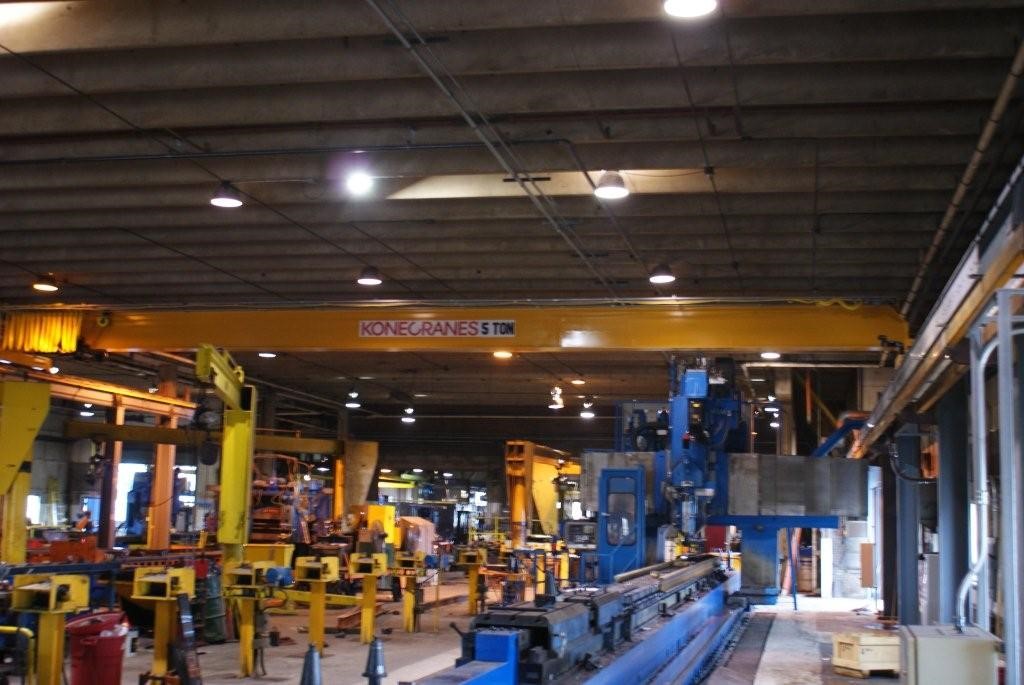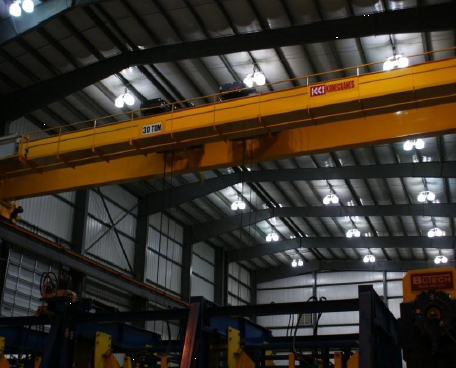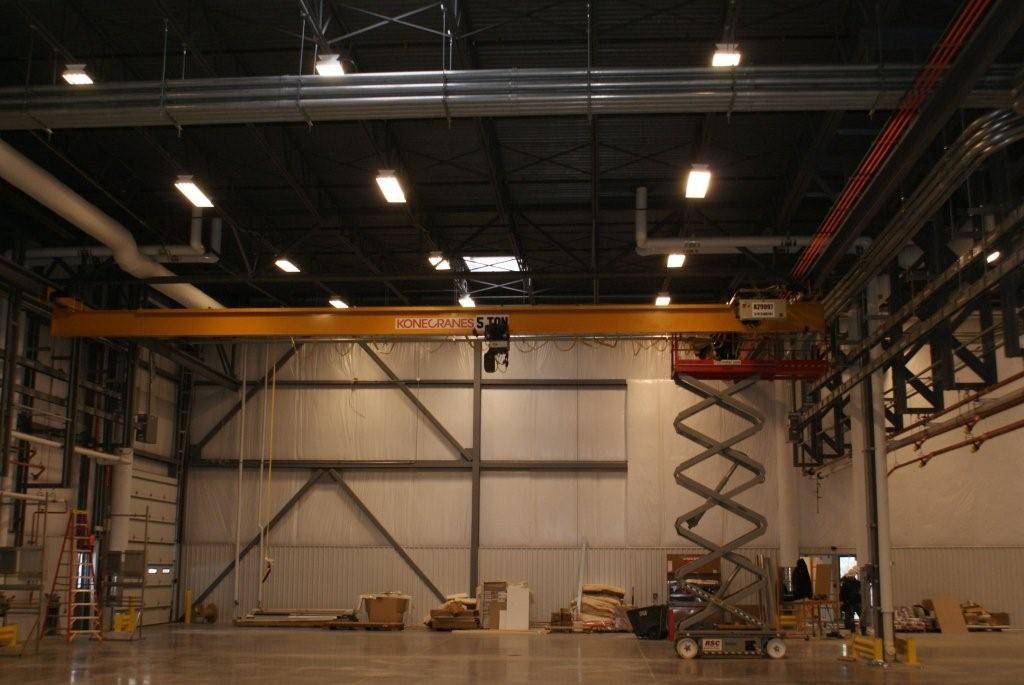 Back to Types of Cranes
Back to Types of Cranes



Bridge Cranes
Top Running Single Girder
Top running single girder cranes make up a large portion of cranes sold due to their cost efectiveness, ease of installation and the ability to still meet customer's crane needs.
Advantages and Options Include:
- Top Running end trucks with under running hoist(s)
- Wide Range of Spans and Capacities
- Most popular style of crane
- Full powered and manual options
- Single or Multiple hoists
- Profile beam or box girder design
- Girder connection to end truck options available
Top Running Double Girder
Top running double girder cranes are able to maximize lift heights by bringing the hoist hook in between the two girders. Top running double girder hoists are designed with low headroom hoists. These cranes can have such options as walkways, cabs, and magnet systems.
Advantages and Options Include:
- Top Running end trucks with top running hoist(s)
- Longer Spans and Capacities
- Maximize hook height by bringing hook in between girders
- Custom girder designs are available
- Profile beam or box girder design
- Single or Multiple hoists
- Options including cabs and platforms
- Girder connection to end truck options available
Under Running Single and Double Girder
Under running cranes can either run on free standing systems or be supported of the roof/steel structure of buildings. Ceiling supported systems eliminate the need for columns maximizing the floor space. Hook side approach is increased as the bridge beams can extend under the runway beams.
Advantages and Options Include:
- Under Running end trucks with under running hoist(s)
- Wide Range of Spans and Capacities
- Full Powered and Manual Options
- Increased Floor Space
- Increased Hook Side Approach
- Single or Multiple hoists
- Various Hoist Configurations
Workstation Cranes
These push pull or powered crane systems are ideal for installing around work zone that require light lifting needs. These expandable systems are quick to install and can commonly be installed without the need for concrete footings.
